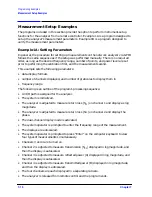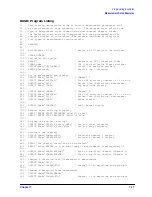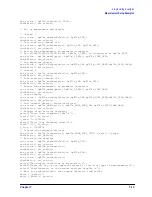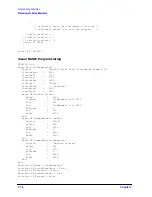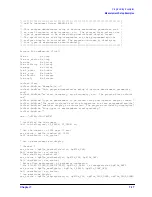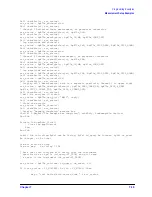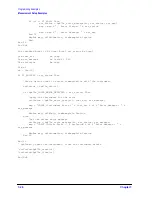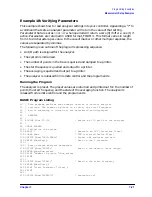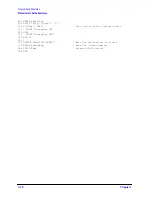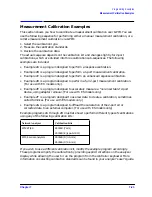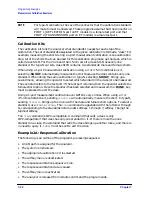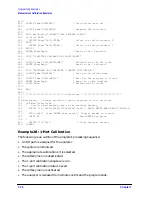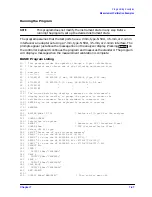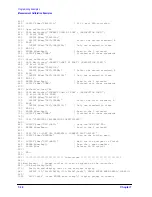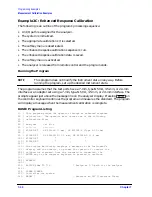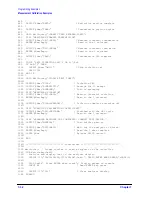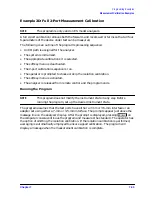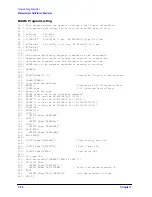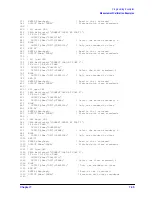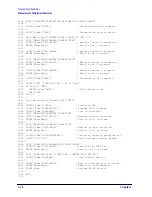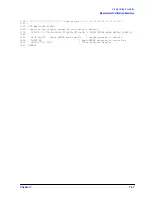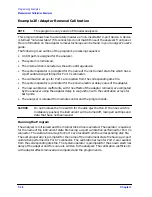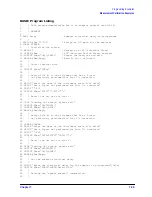
7-24
Chapter 7
Programming Examples
Measurement Calibration Examples
NOTE
For type-N connectors, the sex of the connector that the calibration standard
will mate to must be observed. These programs assume that the connector on
PORT 1 (REFLECTION port on ET models) is a female test port and that
PORT 2 (TRANSMISSION port on ET models) is a male test port.
Calibration Kits
The calibration kit tells the analyzer what standards to expect at each step of the
calibration. The set of standards associated with a given calibration is termed a “class.” For
example, measuring the short during a 1-port measurement calibration is one calibration
step. All of the shorts that can be used for this calibration step make up the class, which is
called class S11B. For the 7-mm and the 3.5-mm cal kits, class S11B uses only one
standard. For type-N cal kits, class S11B contains two standards: male and female shorts.
When doing a 1-port measurement calibration using a 7- or 3.5-mm calibration kit,
selecting
automatically measures the short because the class contains only one
standard. When doing the same calibration in type-N, selecting
brings up a
second menu, allowing the operator to select which standard in the class is to be measured.
The sex listed refers to the test port: if the test port is female, then the operator selects the
female short option. Once the standard has been selected and measured, the
key
must be pressed to exit the class.
Doing a 1-port measurement calibration over GPIB is very similar. When using a 7- or
3.5-mm calibration kit, sending
CLASS11B
will automatically measure the short. In type-N,
sending
CLASS11B
brings up the menu with the male and female short options. To select a
standard, use
STANA
or
STANB
. The
STAN
command is appended with the letters A through
G, corresponding to the standards listed under softkeys 1 through 7, softkey 1 being the
topmost softkey.
The
STAN
command is OPC-compatible. A command that calls a class is only
OPC-compatible if that class has only one standard in it. If there is more than one
standard in a class, the command that calls the class brings up another menu, and there is
no need to query it.
DONE;
must be sent to exit the class.
Example 2A: Response Calibration
The following is an outline of the program's processing sequence:
• An I/O path is assigned for the analyzer.
• The system is initialized.
• The appropriate calibration kit is selected.
• The softkey menu is deactivated.
• The response calibration sequence is run.
• The response calibration data is saved.
• The softkey menu is activated.
• The analyzer is released from remote control and the program ends.
SHORT
SHORT
DONE
Summary of Contents for 8719ES
Page 15: ...1 1 1 Alphabetical Command Reference ...
Page 293: ...2 1 2 Introduction to Instrument Control ...
Page 310: ...3 1 3 GPIB Programming ...
Page 334: ...4 1 4 Reading Analyzer Data ...
Page 343: ...5 1 5 Data Processing Chain ...
Page 350: ...6 1 6 Error Reporting ...
Page 364: ...7 1 7 Programming Examples ...
Page 502: ...A 1 A Preset Conditions ...
Page 517: ...B 1 B Command Listings ...

